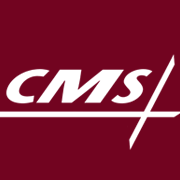CMS Provider Data Combats Medicare, Medicaid, CHIP Fraud
CMS has released two new data sets to make healthcare provider information more transparent as an ongoing effort to squash Medicare and Medicaid fraud.

- To help combat healthcare fraud, the Centers for Medicare & Medicaid Services (CMS) has released a new pair of public data sets to promote greater Medicare and Medicaid data transparency and cut down on Medicare and Medicaid fraud, waste, and abuse.

Under the Affordable Care Act (ACA), a push for greater transparency opportunities is changing the healthcare game. Healthcare providers will now be able to leverage through Medicare Provider Enrollment data with more ease to promote intelligent, informed decisions, CMS said.
CMS is specifically working to target billing fraud associated with Medicare, Medicaid, and the Children’s Health Insurance Program (CHIP), explained Shantanu Agrawal, MD, CMS Deputy Administrator and Director, Center for Program Integrity, earlier this week on the organization’s blog.
This data, which includes items such as provider name, provider enrollment type and state, and provider specialty, will continue to expand and be consolidated accordingly, the organization explained.
Earlier Medicare and Medicaid transparency efforts from CMS have not been favorably received. Last May, CMS received some slack from the United States Government Accountability Office (GAO) for providing innaccurate data regarding its vaguely presented Medicare payment rate information.
“CMS should better document its process for establishing relative values and develop a process to inform the public of potentially misvalued services," the GAO stated.
"CMS should also develop a plan for using funds appropriated for the collection and use of information on physicians’ services in the determination of relative values," the organization added.
Last November, the GAO again said Medicaid data from CMS was not relevant, timely, or reliable.
“[CMS] generally does not require or otherwise collect data from states on sources of funds to finance Medicaid, nor ensure that the data it does collect are accurate and complete," said the GAO within testimony before the Subcommittee on Health, the Committee on Energy and Commerce, and the House of Representatives.
“[Payments] that greatly exceed costs raise questions about whether they are economical and efficient as required by law, and the extent to which they are ultimately used for Medicaid services," GAO explained.
“CMS lacks data on supplemental payments made to individual providers. Per federal internal control standards, agencies should have reliable information for decision making and reporting, and reasonable assurance that agency objectives, such as compliance with laws, are being met."
According to CMS's statement this week, the organization remains determined to advance the industry along with greater transparency efforts.
“CMS continues to move toward data transparency for all non-sensitive Medicare provider and supplier enrollment data,” the organization stated, regarding this week's goals.
“This aligns with the agency’s effort to promote and practice data transparency for Medicare information. Publishing this data allows users, including other health plans, to easily access and validate provider information against Medicare data.”
"The long-term goal of this initiative is to continue to expand data elements available in the files, and eventually consolidate other existing public lists of provider information, such as the Ordering and Referring File, Part D Prescribing File, and Revalidation Lists," said Agrawal.
"CMS believes the release of the enrollment data provides a clear and transparent way for providers, suppliers, state Medicaid programs, private payers, researchers, and other interested individuals or organizations to leverage Medicare Provider Enrollment information."
The first public file contains information about the Medicare beneficiaries’ various ambulatory and home health agency (HHA) services, Agrawal said.
The second public file lists all approved healthcare providers and supplies for Medicare’s fee-for-service operations.
In July of 2013, CMS temporarily did not approve new home health providers and supplier applications for Medicare, Medicaid, and CHIP enrollment under authority of the ACA.
For a six-month period – considered as Phase I – areas designated as healthcare fraud “hot spots” were under a watchful eye across Miami, Chicago, and Houston.
CMS’s overarching goal for Phase I was to maintain patients’ access to care while putting an end to Medicare, Medicaid, and CHIP billing fraud, stated Marilyn Tavenner, CMS Adminstrator, in 2013.
“[Each] of these areas has experienced intense, sustained criminal prosecution activity with respect to the provider and supplier types subject to these moratoria,” CMS stated within a Phase I notice.
“CMS’s own administrative investigations and oversight have been equally intense in these areas,” the organization said.
As this week’s announcement from Agrawal explained, the original six-month temporary enrollment moratoria was extended again on July 29, 2014, January 29, 2015, July 29, 2015, and last month on January 29, 2016.
“The moratoria temporarily halted the enrollment of new [HHAs] and ground ambulance suppliers in certain geographic areas, and giving CMS the opportunity to analyze and monitor the existing provider and supplier base, as well as further focus additional fraud prevention and detection tools in these areas,” stated Agrawal.
New anonymously presented interactive data, searchable by geographic region, is updated quarter and covers the timeframe from October 1, 2014 to September 30, 2015.
“For this first release, the data provide information on the number of Medicare ambulance suppliers and HHAs servicing a geographic region, with moratoria regions at the state and county level clearly indicated, and the number of Medicare beneficiaries who use one of these services,” he said.
“CMS believes the release of the enrollment data provides a clear and transparent way for providers, suppliers, state Medicaid programs, private payers, researchers, and other interested individuals or organizations to leverage Medicare Provider Enrollment information,” he added.
